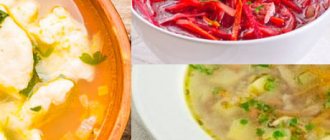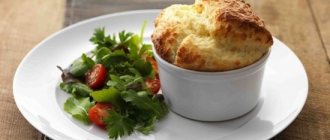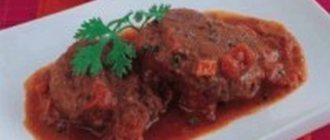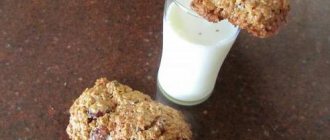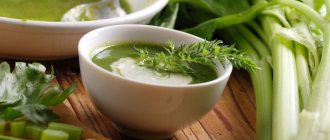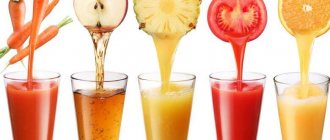Salad with broccoli and hearts
A hearty, healthy dish, served as a main dish or as a cold appetizer.
- hearts – 300 g;
- broccoli – 250 g;
- red lentils – 130 g;
- lemon - quarter;
- garlic – clove;
- red onion – 1 piece;
- balsamic vinegar – 2.5 tablespoons;
- olive oil – 5 tablespoons;
- mustard - a small spoon;
- salt is added to taste.
- Chop the onion into rings, put in a bowl and pour in vinegar, leave for 15 minutes, stirring occasionally;
- Rinse the hearts, remove the film, boil in water with added salt;
- Take the broccoli into pieces, add hot water, add salt and boil;
- Place the cabbage in a sieve and cool;
- Rinse the lentils and boil, then cool and put in a salad bowl;
- Coarsely chop the cabbage, the main product, and squeeze out the garlic;
- Mix mustard, oil and lemon juice;
- Combine all salad ingredients together;
- Garnish with onion rings.
Top 20 delicious and low-calorie recipes for losing weight
Despite the fact that fried chicken hearts have a wonderful rich taste, this cooking method should be immediately excluded, as it significantly increases the calorie content of the finished dish.
Salad with broccoli and lentils
- Chicken hearts – 300 g.
- Broccoli – 250 g.
- Red lentils – 100 g.
- Onion – 2 pcs.
- Lemon – ⅓ pcs.
- Garlic – 2 cloves.
- Olive oil – 50 g.
- Balsamic vinegar – 40 ml.
- Dijon mustard – 10 g.
Step-by-step instruction:
- Chop the onion into half rings and pour vinegar over it.
- Boil cabbage and lentils.
- Boil the peeled hearts in lightly salted water with the addition of bay leaf and pepper (peas).
- Cool all ingredients.
- Mix oil, finely chopped garlic, mustard and lemon juice in a separate bowl.
- Combine all the ingredients of the dish, mix gently and let the salad brew for 15-20 minutes.
Calorie content – 72 kcal/100 g.
Stewed in sour cream
- Chicken heart – 400 g.
- Sour cream 10% – 150 ml.
- Onion – 3 pcs.
- Turmeric – 1 pinch.
Step-by-step instruction:
- Chop the onion and fry it until golden brown.
- Stew the hearts with a little water, season with salt, pepper and turmeric.
- A couple of minutes before it is completely ready, add sour cream to the pan.
- Sprinkle with fresh dill before serving.
Calorie content – 76 kcal/100 g.
Light soup
- By-products – 600 g.
- Potatoes – 300 g.
- Sweet pepper – 1 pc.
- Tomatoes – 2 pcs.
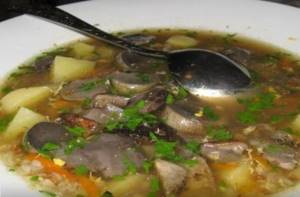
Step-by-step instruction:
- Prepare the hearts: rinse and cut into 2 parts.
- Pour water over offal and cook until boiling.
- Chop the potatoes into strips and the pepper into cubes.
- Skim off the foam and after a quarter of an hour add potatoes and pepper.
- Scald the tomatoes, peel and wipe. Add the resulting mass to the soup.
- Simmer for an additional 7 minutes under the lid, sprinkle with herbs when serving.
Calorie content – 105 kcal/100 g.
Roast with mushrooms
This recipe involves the use of special baking dishes - ceramic pots:
- Hearts – 400 g.
- Large eggplant – 1 pc.
- Green apple – 150 g.
- Onion – 2 pcs.
- Champignons – 600 g.
- Garlic – 3 cloves.
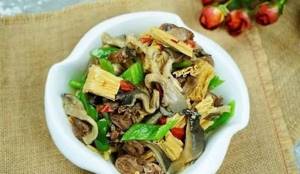
Step-by-step instruction:
- Cut the mushrooms into slices, onion into half rings and eggplant into cubes.
- Soak the last vegetable in cold water for 30-40 minutes to get rid of bitterness.
- Fry the onions and mushrooms, cut the apple into thin strips.
- Place everything in pots.
- Simmer the hearts and eggplant for 5-7 minutes, add seasonings, chopped garlic and place the mixture in pots.
- Bake in the oven at 170°C for 50-60 minutes.
Calorie content – 92 kcal/100 g.
Jellied
- Chicken hearts – 600 g.
- Chicken bones – 500 g.
- Agar-agar.
Step-by-step instruction:
- Trim the fat from the offal and cook for 50 minutes.
- Add chicken bone broth. Add seasonings and salt. Simmer for at least an hour. Strain the broth.
- Dissolve agar-agar (10 g per 1.5 l) in the broth and boil it for another 2-3 minutes.
- Place the hearts in the mold and fill everything with broth.
- Cool and place in the refrigerator for at least 3 hours.
Calorie content – 94 kcal/100 g.
In soy sauce
- Chicken heart – 500 g.
- Sweet pepper – 100 g.
- Carrots – 100 g.
- Onion – 100 g.
- Garlic – 2 cloves.
- Soy sauce – 30 ml.
- Vinegar – 20 ml.
- Tomato paste – 20 g.
- Sugar – 10 g.
- Corn starch – 5 g.
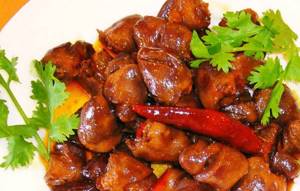
Step-by-step instruction:
- Prepare the offal, pour soy sauce over it and leave to marinate for half an hour.
- Chop onion, pepper and garlic, grate carrots.
- Quickly fry the vegetables, add offal, a little water and simmer for 20 minutes.
- Mix vinegar, tomato paste, sugar, starch, 40 ml of water in a separate bowl.
- Place the sauce in the pan and simmer for another 10-12 minutes until thickened.
Calorie content – 85 kcal/100 g.
With green beans
- By-products – 1.2 kg.
- Green beans – 900 g.
- Tomato paste – 60 g.
Step-by-step instruction:
- Rinse the hearts, trim off the fat and place the food in a frying pan to simmer with a little water.
- Add spices and tomato paste, simmer for another 5-7 minutes.
- Place the beans in the pan and simmer for a quarter of an hour until the beans are ready.
Calorie content – 95 kcal/100 g.
Buckwheat soup
- Chicken hearts – 500 g.
- Chicken breast – 150 g.
- Buckwheat – 100 g.
- Carrots – 100 g.
- Potatoes – 200 g.
- Onion – 100 g.
- Garlic – 2 cloves.
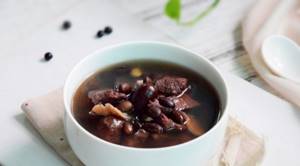
Step-by-step instruction:
- Peel the hearts and cut them into 2 parts.
- Pour water over the offal and breast and cook the broth.
- Chop onions, potatoes (in strips), grate carrots.
- Make a fry of carrots and onions, send the potatoes into the broth.
- Remove the bird fillet and separate it into strands and place it back into the soup.
- After boiling, add washed buckwheat to the broth.
- 5 minutes before readiness, add frying and chopped garlic.
- Let the soup brew for at least a quarter of an hour.
Calorie content – 93 kcal/100 g.
In pots with vegetables
Pumpkin will give this dish an unusual taste:
- Chicken by-products – 1 kg.
- Potatoes – 400 g.
- Pumpkin – 500 g.
- Tomatoes – 200 g.
- Carrots – 100 g.
- Onion – 100 g.
- Garlic – 3 cloves.
- Sweet pepper – 200 g.
- Soy sauce – 60 ml.
Step-by-step instruction:
- Wash the hearts, trim off the fat, pour soy sauce over them.
- Peel the pumpkin and potatoes and cut them into cubes.
- Chop the onion and pepper, grate the carrots.
- Make a roast of carrots and onions.
- Place in layers in pots: hearts, potatoes, pumpkin, sweet peppers, chopped garlic and fry.
- Add water to each pot, cover with a lid and place in the oven for 1.5-2 hours (170°C).
Calorie content – 102 kcal/100 g.
Cutlets in the oven
- Chicken by-products – 500 g.
- Chicken fillet – 300 g.
- Egg – 1 pc.
- Onion – 200 g.
- Garlic – 2 cloves.
- Ground oat bran – 50 g.
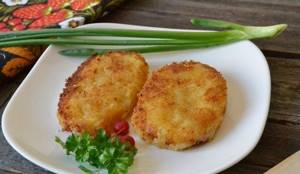
Step-by-step instruction:
- Mince offal, chicken breast, garlic and onion.
- Add spices and egg, mix the minced meat well.
- With wet hands, form cutlets.
- Bread them in bran and lightly “fry” them in a dry frying pan.
- Place all the pieces in a fireproof form.
- Place in the oven preheated to 190°C for 20-25 minutes.
Calorie content – 135 kcal/100 g.
In a slow cooker
Especially tasty and healthy dishes are obtained when cooking in this kitchen appliance:
- Chicken hearts – 600 g.
- Potatoes – 4 pcs.
- Carrots – 200 g.
- Onion – 200 g.
- Zucchini – 500 g.
Step-by-step instruction:
- Rinse the by-products, place them in the bowl of the device, add 50 ml of water and set to “Stew” mode.
- Peel and cut potatoes, carrots and zucchini into cubes, and onion into half rings.
- After 50 minutes of stewing, add potatoes, onions and carrots to the slow cooker. Add spices.
- After another 20 minutes - zucchini.
- After 10 minutes, check the readiness of the dish.
Serve with fresh parsley.

With giblets
- Chicken hearts, gizzards and liver – 500 g each.
- Onion – 300 g.
- Oyster mushrooms – 300 g.
- Sour cream 10% – 250 g.
Step-by-step instruction:
- Wash and prepare all giblets.
- Cut the hearts and ventricles into slices, chop the onion and oyster mushrooms.
- Place the ventricles in a saucepan and simmer them for 40 minutes.
- Add hearts to the stewed offal.
- In a separate pan, fry onions, liver and mushrooms.
- Transfer the mixture to the offal, add sour cream and simmer for 10 minutes.
Calorie content – 124 kcal/100 g.
On skewers
- Chicken by-products – 1 kg.
- Mustard – 40 g.
- Sour cream 10% – 300 g.
- Medium-sized onions – 4 pcs.
Step-by-step instruction:
- Wash and trim the veins and fat from the hearts.
- Cut the onion into quarters.
- Mix sour cream and mustard and pour the mixture over the offal and onion.
- Soak bamboo skewers in water for 30 minutes.
- Thread the hearts and onions onto skewers (alternately).
- Bake in the oven for 25-30 minutes (180°C).
Calorie content – 131 kcal/100 g.
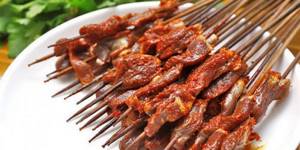
With carrots in Korean
- Chicken hearts – 600 g.
- Onion – 100 g.
- Carrots – 200 g.
- Water – 0.5 l.
- Sweet paprika – 3 g.
- Cilantro and coriander - 5 g each.
- Sugar – 4 g.
- Garlic – 2 cloves.
- Rice vinegar – 60 ml.
Step-by-step instruction:
- Rinse the hearts, cover them with water and cook in lightly salted water for 40-45 minutes.
- Chop the onion into thin half rings.
- Marinate half an onion in 50 ml of water, 2 g of sugar and 20 ml of vinegar.
- Cut the carrots into strips, finely chop the garlic.
- Mix pickled onions, carrots and garlic.
- Add spices.
- Fry the remaining onion in a frying pan and place in a salad bowl.
- Leave the dish to steep overnight.
Calorie content – 116 kcal/100 g.
Kuchmachi in Georgian
This dish will take a little longer to prepare, but it's worth it:.
- Chicken by-products (liver, hearts and stomachs) – 300 g each.
- Khmeli-suneli – 20 g.
- Onion – 2 pcs.
- Pomegranate – 1 pc.
- Dry red wine – 100 ml.
- Curry – 10 g.
- Garlic – 2 cloves.
- Barberry – 10 g.
- Hot pepper – 1 pod.

Step-by-step instruction:
- Prepare offal, cut everything into 3-4 parts.
- Squeeze the juice from ½ pomegranate.
- In a dry frying pan, lightly fry the liver, hearts and gizzards. Pour in the pomegranate juice and simmer over low heat for 20 minutes.
- Chop onion and garlic. Fry them in a separate pan.
- Season the offal with spices and simmer for another quarter of an hour.
- 5 minutes before it’s ready, add the fried onion to the pan.
When serving, sprinkle with remaining pomegranate seeds.
Calorie content – 116 kcal/100 g.
Goulash with pickles
- Chicken hearts – 400 g.
- Onion – 2 pcs.
- Pickled cucumbers – 2 pcs.
- Chicken broth – 100 ml.
- Tomato paste – 30 g.
- Sugar – 5 g.
Step-by-step instruction:
- Rinse the hearts well, cut off all excess.
- Pour water over them and cook for 30 minutes.
- Chop and fry the onion, add the pickled cucumbers cut into strips.
- Dilute tomato paste in 50 ml of water, add sugar and fry.
- Place the offal in a saucepan, pour in the broth and simmer for at least another quarter of an hour.
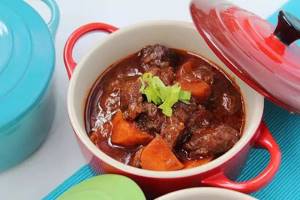
Calorie content – 89 kcal/100 g.
Salad with daikon
- Chicken heart – 300 g.
- Daikon – 1 pc.
- Carrots – 1 pc.
- Leek – 150 g.
- Lemon juice – 20 ml.
- Soy sauce – 10 ml.
- Olive oil – 20 ml.
Step-by-step instruction:
- Rinse the chicken hearts, trim off excess fat and simmer in a frying pan with a little water for 25-30 minutes.
- Peel the daikon and carrots and cut into strips, leeks into rings, and simply chop the green onion. Add seasonings.
- Make a dressing from oil, soy sauce, lemon juice.
- Mix all ingredients and pour in sauce.
Calorie content – 95 kcal/100 g.
Pate
- Chicken hearts and liver – 500 g.
- Carrots – 1 pc.
- Onion – 2 pcs.
- Chicken broth – 100 ml.
- Ghee – 20 g.
Step-by-step instruction:
- Coarsely chop the onion and carrots.
- Place vegetables on the bottom of the multicooker, then offal and chicken broth. Season.
- Select the “Extinguishing” mode and set aside 1.5 hours.
- Transfer the finished products into a blender and grind everything.
- Cover with a thin layer of oil and place in the refrigerator to harden.
Calorie content – 126 kcal/100 g.
Rassolnik
- Chicken by-products – 450 g.
- Canned beans – 400 g.
- Potatoes – 2 pcs.
- Carrots – 1 pc.
- Onion – 1 pc.
- Garlic – 2 cloves.
- Pickled cucumbers – 2 pcs.
- Cucumber pickle – 60 ml.
- Tomato juice – 150 ml.

Step-by-step instruction:
- Chop the onion, grate the carrots and fry them.
- Add juice and simmer for another 2 minutes. Season.
- Pour water over the hearts and cook for 40 minutes, add bay leaf, salt and peppercorns.
- Cut the potatoes into strips and place in a saucepan, after 10 minutes add the beans.
- Add fried cucumbers and chopped garlic to the soup.
- Serve with fresh herbs.
Calorie content – 85 kcal/100 g.
Salad with arugula
- Chicken hearts – 300 g.
- Avocado – ½ pc.
- Eggs – 2 pcs.
- Green peas - ½ jar.
- Cucumber – 1 pc.
- Arugula – 100 g.
- Sour cream 10% – 100 g.
Step-by-step instruction:
- Boil the hearts and eggs.
- Cut the eggs into cubes, hearts into circles.
- Peel the avocado and cut it into cubes, the cucumber into strips.
- Combine all ingredients, add salt and sour cream.
- Sprinkle arugula on top.
Calorie content – 115 kcal/100 g.
Stewed hearts in sour cream
Popular dish. Served with a side dish of boiled rice or mashed potatoes. The recipe can be supplemented with champignon mushrooms.
- chicken hearts – 400 g;
- low fat sour cream – 250 ml;
- onion – 2 pcs;
- wheat flour - a tablespoon;
- sunflower oil;
- salt is added to taste;
- ground black pepper.
- Rinse the by-product, cut into 4 parts;
- Chop the onions, fry with oil until golden brown;
- Place the hearts in a frying pan, simmer with added water over low heat, cover with a lid;
- Add sour cream, flour, salt and pepper;
- Mix the ingredients thoroughly and cook until the sauce thickens;
- Before serving, sprinkle chopped parsley on top.
Chicken hearts during pregnancy and breastfeeding
During pregnancy, a woman may be intentionally prescribed chicken hearts, since they are safer from meat for the woman and the fetus. Closer to the birth of the baby, you should limit your consumption of meat, but after birth, use only chicken breast and “white meat”.
In the first week after giving birth, a nursing mother really needs a panacea - chicken, especially its offal. They will help the mother recover faster and ensure milk flow. You should choose chicken only according to the following criteria:
- Ham. They should not be on the table until breastfeeding ends. For some factories, the use of hormonal drugs to “round” shapes was prohibited. Until now, no one knows whether such drugs are still used.
- Do not buy large carcasses for the same reasons.
- The production date may sometimes be different - be careful when purchasing a pack of meat with double stickers.
- Trade brand. Always choose meat and dairy from one manufacturer you trust.
- If you really want to eat chicken, and the end of lactation is still very far away, give preference to offal - gizzards, navels and hearts. Liver - it is better to exclude due to improper processing of the product (possible), after which an allergy may occur in the child.
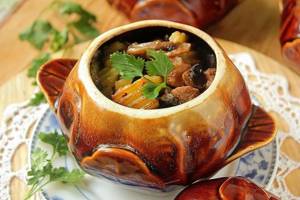
The product should be administered during lactation from broth. Try it and watch your child's reaction. If all is well, you can steam, stew or bake your meat. Especially in the first 4-6 months, you should completely exclude all fatty varieties of poultry and animal meat. Although chicken is a dietary dish, it is better to avoid it after childbirth.
Light soup
A healthy, nutritious and tasty option for your everyday lunch meal. The set of vegetables for the soup can be changed.
- main offal – 500 g;
- potatoes – 3 pcs;
- bell pepper – 1 piece;
- tomato – 2 pcs;
- bay leaf – 2 pcs;
- greenery;
- sour cream is added to taste;
- pepper and salt.
- Wash the hearts, cut into halves, put in a pan with water;
- Bring to a boil, skim off the foam and lower the heat;
- Boil for 10 minutes, then add potatoes;
- Add salt and cook for 7 minutes;
- Cut the pepper into squares;
- Rinse the tomatoes with boiling water, remove the peel, coarsely chop the pulp;
- Place the vegetables in a saucepan along with the bay leaf;
- Boil the soup for 7 minutes, then pour in the herbs and let the soup stand for 5 minutes under the lid;
- Pour into plates, add sour cream and pepper.
Roast with mushrooms
The roast turns out delicious, easy to prepare, although it takes some time. The dish will be more refined if you add nutmeg, pepper, bay leaf and rosemary.
- eggplant – 1 piece;
- green apple – 1 piece;
- bulb;
- champignon mushrooms – 500 g;
- olives - jar;
- dill and cilantro - a bunch;
- hearts – 400 g;
- garlic.
- Cut the mushrooms into cubes or slices, fry with the addition of oil so that the mushrooms release their juice;
- Add the onion and do not remove the pan until the onion turns golden;
- Place fried onions and mushrooms in a cup, add herbs and chopped apple;
- Soak the eggplant in water and cut into cubes;
- Fry the eggplant and heart halves;
- Add everything else, plus spices;
- Stir, pour in a third of a glass of boiling water and simmer for 5-10 minutes;
- At the end add garlic for flavor.
Dietary hearts in cream sauce
The basis of the recipe is spices and creamy sauce. The peculiarity of the recipe is that the hearts are fried in their own juice and then supplemented with other ingredients. This allows you to reduce the calorie content of the dish. Buckwheat, rice, and fresh flatbread can be a side dish.
- main product – 500 g;
- onion – 1 piece;
- cream 10% fat – 100 ml (optional);
- Khmeli-suneli seasoning.
- Rinse, clean the heart, fry under a closed lid over low heat (without adding oil) for 7 minutes;
- Add chopped onion, pepper, salt, seasoning, cream;
- Simmer for 30-40 minutes over low heat, cover with a lid, stir occasionally.
Heart chops
The dish is served as a cold appetizer. True, you will have to tinker with it a little, but the chops turn out juicy, tender, with a thin crispy crust. Plus, this is a great recipe for those on a diet.
- Rinse the hearts, dry them, cut off the arteries;
- Make a transverse cut along each piece (to increase the area of the heart);
- Place the pieces on a board, cover with film and beat off;
- Beat the egg separately, add salt and pepper;
- Dip a piece of meat in the batter, then roll it in a plate with flour;
- Fry in a frying pan with added oil until golden brown and crusty;
- Serve with sauce or herbs.
Jellied
The recipe is suitable for a holiday table. The dish can be made in portions in molds.
- heart – 500 g;
- chicken carcasses and trimmed chicken meat – 500 g;
- agar-agar seasoning;
- salt pepper;
- Trim fat from hearts, boil for 40 minutes;
- Separately, cook chicken bone broth (cook for 40 minutes, add salt and 2 peppercorns);
- Place the finished hearts in the mold, cut side to side;
- Strain the broth, dissolve agar-agar there (a spoonful of seasoning per 1.5 cups of liquid);
- Boil the liquid with agar-agar and simmer for 3 minutes to activate its gelling properties;
- Fill the mold with broth. The layer is equal to the height of the meat;
- The aspic should harden within 3 hours.
Braised chicken hearts
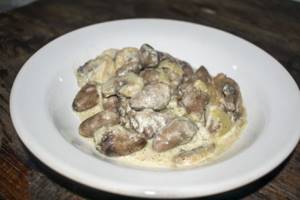
Many girls, when switching to a diet, completely lose their heads and forget about health. Nutrition should be balanced, with reduced carbohydrate intake. Then you can quickly and effectively lose weight, and the kilograms will not return. You also need to eat enough protein, which meat is especially rich in. Today we will prepare delicious chicken hearts at home.
Although the dish is intended for those who are trying to lose weight, do not think that by eating hearts at 10 pm you will see the effect. It contains enough calories that should be converted into energy and spent during the day. The maximum allowed time is one o'clock in the afternoon. After this time, this dish is not recommended for those losing weight.
Contraindications to eating chicken hearts
Provided normal tolerance, chicken hearts are not contraindicated during pregnancy.
Children under 8 months should not be given chicken hearts. If an older baby does not have digestive problems and tolerates meat complementary foods well, you can add this product to his menu.
Chicken hearts have virtually no contraindications for consumption.
They should be excluded from the diet only in case of individual intolerance.
The benefits of chicken by-products are directly proportional to their weight. Small-sized hearts are a real storehouse of vitamins and nutrients, making them suitable for children, expectant mothers, athletes and healthy lifestyle enthusiasts. Most dietary recipes for chicken hearts allow for the use of a variety of ingredients and cooking methods, so a diet that includes this product will never be boring and monotonous.
Energy value per 100 g:
- proteins - 9.71 g;
- fats - 7.50 g;
- carbohydrates - 2.20 g;
- calorie content - 115.67 kcal.
Ingredients:
- chicken hearts – 500 g;
- champignons – 200 g;
- onion – 1 pc.;
- ground black pepper 0.5-1 tsp;
- sour cream 10% - 200 g.
Cooking method:
- We wash the main product well and put it in a frying pan. Please note that it must be dry and oil must be used.
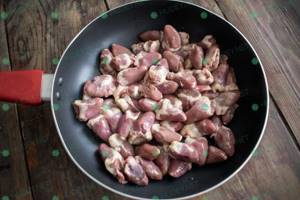
- Cut the champignons into pieces and add to the hearts.

- Cut the onion into half rings or cubes. If the onion is not large, then use 2-3. There should be a lot of this product.
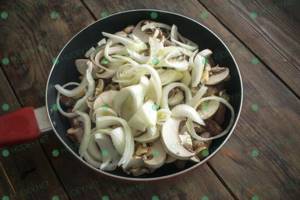
- Close the lid and simmer for 10-15 minutes. There is no need to add additional water. Then sprinkle generously with ground black pepper and mix. Be sure to try it. If you feel that there are not enough spices, you can add more. Since the dish is dietary, we do not add salt.

- Simmer for another 2-3 minutes. Then pour in sour cream.

- And simmer again for 5-7 minutes. Be sure to taste the heart so that it is not raw inside. In this case, the extinguishing time can be increased. The dish is ready and can be served.
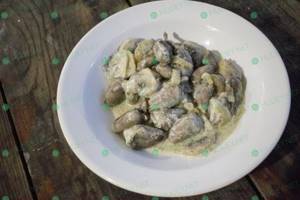
Little secret: To make the dish as healthy as possible, choose chilled hearts rather than frozen ones. They should be dense to the touch, have a smooth, beautiful structure without damage. The finished dish is served without a side dish and you can eat a maximum of 200 g at a time. If you have a large family, then hearts can be prepared for everyone, but then use mashed potatoes, rice or pasta as a side dish.
Nutritionist advice. Since the calorie content of the finished dish is low, it is necessary to supplement it with other products. If this concerns lunch, then you can diversify the menu with vegetable soup, whole grain yeast-free bread, baked or raw vegetables.
Subscribe to our newsletter
You will receive a selection of useful articles about healthy eating, healthy exercises, as well as proven diets and discounts on courses
The site was created for general educational purposes. Any published information is provided for informational purposes only and is not a direct guide to action. We recommend seeking the advice of a professional before using any tips, diets, products or techniques described. This will help you achieve better results and avoid unwanted consequences. Remember, everyone is personally responsible for their health.
When using site materials, a backlink is required!
Are hearts suitable for weight loss, proper nutrition and diet?
By-products are often included in the menu of people with weakened bodies due to their unique chemical composition. And chicken hearts are no exception.
They contain a large number of different microelements:
- iron – participates in the production of hemoglobin;
- copper – affects the secretion of endorphin hormones and maintains the elasticity of muscle fibers;
- cobalt – stimulates cell regeneration and plays an important role in the treatment of diabetes and anemia;
- calcium – strengthens bone tissue;
- zinc – takes part in protein synthesis;
- phosphorus – is an important component of mineralization (growth of teeth, hair) and metabolism;
- magnesium – supports the functioning of the endocrine and cardiovascular systems, and sulfur – healthy intestinal microflora;
- potassium – restores water-salt balance, stimulates brain activity;
- sodium – normalizes blood pressure and gastrointestinal function.
Amino acids and proteins are responsible for transporting nutrients to cells, and B vitamins regulate the functioning of the central nervous system and are responsible for the condition of the skin and mucous membranes.
Chicken hearts are useful for children due to their powerful stimulation of growth, as well as strengthening of the immune system. People on a diet - due to its low calorie content and long period of absorption, which creates a feeling of satiety.
When consuming this product in the process of losing weight, you must choose the right cooking method and carefully consider the processing of hearts before cooking.
Organic products sold in stores are usually ready to eat. However, dietary recipes for chicken hearts require the removal of films and fat, which contain the main cholesterol.
Processing includes the following actions:
- Rinse thoroughly and soak the product for 40-60 minutes in cold water.
- Carefully trim the fat from the base of each heart.
- Use a knife to pry off the film and remove it from the muscle mass.
- Cut each heart and clean it from the inside.
Important! After processing the product, the total weight will be significantly reduced. This factor must be taken into account when purchasing.
How to cook chicken hearts
Usually the question: “How to cook chicken hearts?” There are a lot of recipes using butter, sour cream, and, in addition, flour. All this, of course, is great, but it’s not very suitable if you’re counting calories. One far from impressive serving of such a dish will contain almost 300 kcal, mainly from fats rather than proteins. Therefore, it is definitely worth looking for a healthier alternative. But many people don’t like hearts simply boiled in water with spices. If you are one of them, try to learn how to make changes to delicious recipes to make them lower in calories.
Main conclusions
Recipes that include chicken hearts are easy and simple to prepare. At the same time, the dishes are not only tasty and healthy, but also light in calories. Main conclusions
- Chicken hearts contain a lot of protein and beneficial nutrients.
- The product can be boiled, baked, cooked in a double boiler or in a slow cooker.
- It is better to avoid frying in a pan.
- Dishes made from offal are recommended for patients, athletes and children.
- The only contraindication is individual intolerance.
- Before consumption, to reduce calorie content, it is necessary to trim off excess fat, films and veins.
You can make soups, main courses, salads and pates from the hearts. The diet with them is very varied and you will never get bored.
Comment on the article and share your experience and the most successful recipes for preparing dishes from chicken hearts.
How to cook chicken hearts without extra calories
The easiest way is to rinse them and bake them without additional oil, for example, in a bag, or steam them. This is quite tough meat, it will not be very tasty if you just bake it on a baking sheet, parchment or without a lid.
The fastest way is to place the hearts in a chicken baking bag (if you want to lose weight, take one without “factory” seasonings, there are quite a lot of extra ingredients) and cook in the oven at 200 degrees. For those who do not shy away from the microwave oven, there is an even faster method - the same package, 600 W of power, and about 12-14 minutes.
Stewed hearts can be used as an independent meat dish or a meat component in salads, casseroles and other complex dishes.
If you bought “heart + liver” sets on a tray, it’s even easier to prepare - you can simmer them in water with black pepper and onions, you’ll get a pretty passable second course.
What and what to replace in classic recipes with hearts:
- sour cream 20% and fatter - Greek yogurt 5-6% fat, or sour cream 10% fat;
- cream - milk;
- any fat can be conditionally “replaced” by adding chopped stewed red pepper to the dish, or the same grilled vegetable, this will soften the consistency of the dish and add very few calories;
- Replace hard cheese with suluguni or low-fat mozzarella. You can simply reduce the amount of cheese in the recipe by using a finer grater;
- We replace butter for frying with coconut oil, but we do not fry the liver itself in it, but only stew onions and other vegetables in it. In this case, you need to take a minimum of oil and mix the vegetables thoroughly during cooking;
- We replace the mayonnaise in salads with a spoonful of yogurt with the addition of mustard; you can add any vegetables with a “creamy” texture to the salad - baked peppers, tomatoes, eggplants or zucchini, this will make the dish “smoother”, and the lack of fat from mayonnaise in it will be less noticeable.
At what age can chicken hearts be given to children?
First, the child must be accustomed to different types of meat. Then, at about 9 months of age, chicken hearts can be introduced as complementary foods. For this purpose, it is more useful to use homogenized puree; it tends to be easier to digest by the stomach. You should start with half a teaspoon, gradually increasing to 40-50 g. It is better to give such complementary foods in the first half of the day, first monitoring the baby’s condition.
Attention!
When introducing chicken heart into your diet, you should follow the norm, otherwise the expected benefit may result in harm from cholesterol and fatty acids. For children, the restriction on the consumption of complementary foods by offal is no more than 2 times a month.
How to cook chicken hearts: recipes
Hearts stewed with milk
1 tray of hearts (half a kilo), onions, garlic, dill, carrots, a glass of low-fat milk, parchment.
Chop the vegetables as you like, you can lightly spray them with oil from a spray, if you have one in the kitchen. Place on parchment and bake in the oven at 200 degrees for about 15 minutes. Rinse the hearts in cold water and simmer with water until half cooked in a deep frying pan. Pour in milk. Simmer for 10 minutes. Add vegetables, stir, simmer until done.
Hearts with leeks and yogurt
1 leek stalk, 500 g hearts (also suitable with liver for this recipe), 200 g champignons, 1 white onion, 2 cm celery root, black pepper, salt, a jar of Greek yogurt, fresh dill.
Chop the dill, mix with yogurt and leave. Lovers of fresh onions can add a quarter of an onion to this. Chop the remaining vegetables, place them together with the hearts in a deep frying pan and add water. Simmer until done, stirring occasionally. Serve with yogurt and herbs. Great as a main course with brown rice or broccoli.
Hearts baked with vegetables
Unseasoned baking bag, 500 g hearts, 2 large bell peppers, 1 tomato, 1 carrot, 200 g green beans, 1 teaspoon olive oil, garlic clove, fresh or dried basil.
Prepare the vegetables, cut them, wash the hearts. Place all ingredients in a baking bag, add olive oil and garlic, stir, bake at 200 degrees for about 40 minutes. Place the bag on a baking sheet; juice may leak out during cooking. Carefully remove everything together, and open the bag only after the steam inside has subsided and the dish has cooled down a little, otherwise you can get burned by the steam.
Hearts with mushrooms in mustard sauce
1 jar of Greek yogurt, 20 g of any low-fat mozzarella (which has up to 260 kcal per 100 g, you can also take regular suluguni, which melts), 2 tablespoons of Dijon mustard. Half a kilo of chicken hearts, onion, carrots, bell pepper, 200 g of champignons.
Chop the vegetables together with the hearts, place in a deep frying pan, add water, and cook until half cooked. Mix yogurt with Dijon mustard, add to the dish, simmer until tender. Turn off the heat, sprinkle the hearts with grated cheese and let it melt under the lid. You can do without cheese.
Chicken heart and broccoli salad
This healthy and satisfying salad can be served as an appetizer or main course.
- 300 g chicken hearts; - 250 g broccoli; - 130 g red lentils; - 0.25 lemon; - 1 clove of garlic; - 1 red onion; - 2.5 tbsp. spoons of balsamic vinegar; - 5 tbsp. spoons of olive oil; - 1 teaspoon Dijon mustard; - salt.
Chop the red onion into thin rings, place in a bowl and cover with balsamic vinegar. Leave it for 15 minutes, stirring occasionally. Rinse the chicken hearts, peel off the films, and boil in salted water. Break the broccoli into small florets, pour boiling water over it, add salt and cook until soft. Place the cabbage in a colander and cool.
Rinse the lentils, add a small amount of water and boil. Drain the water, let the lentils cool and place them in a salad bowl. Add the pressed garlic, broccoli and hearts, cut into large pieces. Mix mustard with vegetable oil and freshly squeezed lemon juice, pour the sauce over the salad and stir. Garnish the dish with onion rings and serve.
Chemical composition of chicken heart
Chicken hearts are a very good source of protein (up to 21 g / 100 g), B vitamins (niacin, PP - up to 50% and riboflavin B2 - up to 60% of the recommended daily requirement - RDI), zinc and iron (25 and 31% RDI , respectively), as well as cobalt, copper and phosphorus (102, 31 and 22% of RDP).
Thus, a small portion of chicken hearts can cover a person's daily requirement for these nutrients.
Chicken heart contains lysine, which improves the synthesis of enzymes and hormones, and in addition has a strong antiviral effect. Therefore, hearts are indicated for use during the rehabilitation period after viral infections and colds.
Chicken hearts in sour cream
One of the most popular dishes is hearts stewed in sour cream. Serve them with mashed potatoes or rice. If desired, the hearts can be supplemented with thinly sliced fresh mushrooms - for example, champignons.
- 400 g chicken hearts; - 2 onions; - vegetable oil for frying; - 1 glass of sour cream; - 1 tbsp. spoon of wheat flour; - salt; - freshly ground black pepper.
Rinse the hearts thoroughly and cut into 3-4 pieces. Finely chop the onion and fry in a small amount of vegetable oil until golden brown. Reduce the heat, place the hearts in the pan, add a little water and simmer with the lid closed until soft. Then add sour cream, salt, freshly ground black pepper and flour. Mix everything and cook until the sauce thickens. Before serving, you can sprinkle the dish with finely chopped parsley.
The use of chicken hearts in cooking
Usually chicken hearts are boiled or stewed with onions. The basic rule in this case remains the mandatory removal of the greasy film from a small heart.
The fried version of the product (especially in egg or bread batter) adds more calories than boiled and stewed.
Some chefs put the hearts on skewers and bake them in the oven like a kebab.
Some people prefer to make minced meat from chicken by-products (hearts, gizzards, liver) and make cutlets, adding only an egg.
The most delicious are those stewed in sour cream with carrots, eggplant and herbs. They can be eaten with side dishes of rice, buckwheat or potatoes.
Chicken hearts, the benefits and harms of which we will consider for the human body, can be used both for preparing first courses and for preparing second courses, not only in a frying pan, but also in the oven. Chicken gourmets advise making shish kebab or pate from the hearts and thus falling in love with these offal products forever.
Soup with hearts
A tasty and nutritious option for everyday meals is chicken heart soup. The set of vegetables can be varied.
- 500 g chicken hearts; - 1 large sweet pepper; - 3 medium-sized potatoes; - 2 ripe tomatoes; - 2 bay leaves; - salt; - freshly ground black pepper; - a bunch of parsley, dill and celery; - sour cream to taste.
Rinse the by-products, cut them in half, place them in a saucepan and cover with cold water. Bring the water to a boil, skim off the foam and reduce the heat. Boil the hearts for about 10 minutes, then add the peeled and medium-sized potatoes to the pan. Add salt to the soup and cook for another 7 minutes. Peel the sweet peppers from partitions and seeds, cut into squares. Pour boiling water over the tomatoes, remove the skin, and chop the pulp coarsely. Place vegetables in soup, add salt and bay leaf. Cook the soup for another 7 minutes, add a handful of herbs and let the dish stand for 5 minutes with the lid closed. Pour the soup into bowls, pepper and season with sour cream.


